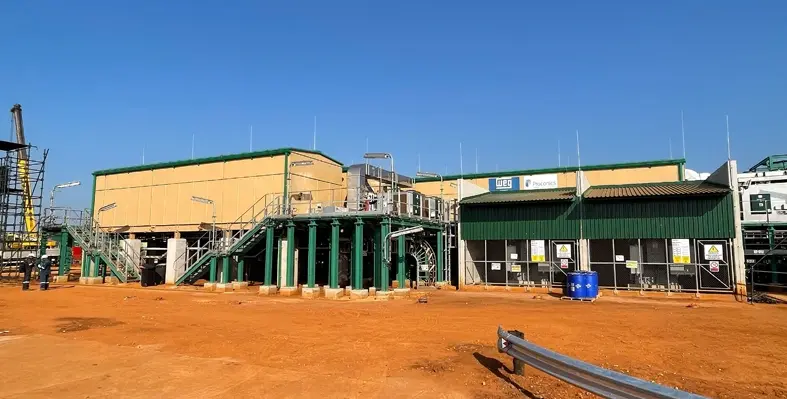Now in the final stages of installation and commissioning, an important substation E-house facility at Sasol’s Upstream Production Sharing Agreement (PSA) Project in Mozambique has relied on WEG Africa’s depth of experience, locally based technical infrastructure and specialised skill sets
The E-house solution with transformers and generator set, procured by EPCM contractor Wood, was locally designed and manufactured by WEG Africa and supplied in partnership with local engineering firm Proconics.
“The project has been a successful demonstration of our product quality and technological capacity, delivered to the highest global standards,” said Lukas Barnard, WEG Africa’s sector specialist oil and gas – business development. “Our scope of supply was really the ‘electrical heart’ of the project – with the electrical supply and control for the entire PSA plant coming through the E-houses.”
The PSA Project includes the construction of facilities to produce 23 million gigajoules of gas/annum, which will power the Temane Thermal Power Plant (CTT) to generate 450MW of electricity and excess gas for export. It will also include a Liquefied Petroleum Gas (LPG) facility that will produce 30,000 tons per year, meeting 75% of Mozambique’s cooking gas demand, as well as light oil for export. The substation package measures 45 m by 22 m and includes medium voltage (MV) and low voltage (LV) switchgear, a battery room, a local equipment room and an HVAC system.
The E-house option overcomes the various challenges of building conventional electrical facilities on-site in countries with limited infrastructure. WEG Africa manufactured and pre-assembled the E-houses under controlled workshop conditions at its advanced facility in Heidelberg, Gauteng. The design also responded to the harsh environmental conditions and other risks on the site.
“The site for which the E-house solution has been designed is in a region which has experienced multiple hurricanes in the past,” Barnard remarked. “WEG Africa also considered the elevation and environmental weather conditions to ensure the E-house solution will withstand the harshest conditions.”
Maximising efficiency while minimising risk
The conducive workshop conditions for constructing the E-houses – and the ready access to the necessary expertise – facilitated strict adherence to WEG Africa’s manufacturing quality standards, which are aligned to ISO 9001. Barnard noted that this also allowed for greater manufacturing efficiency, while reducing the number of people required on site; improving safety levels and minimising the risk of construction-related incidents.
“The whole package, with all the relevant equipment, could be transported to site,” he explained. “Even though the logistics were challenging, this method greatly reduced the complexity and timeline, due to all the equipment already being installed and tested.”
He reiterates that this project combined the manufacturing capabilities of WEG Africa and the project management and design capabilities of Proconics. This demonstrates that the partnership the two companies have built can provide full turnkey solutions to the oil and gas industry.
This article was authored by WEG Africa. Click here for more information on the company.





